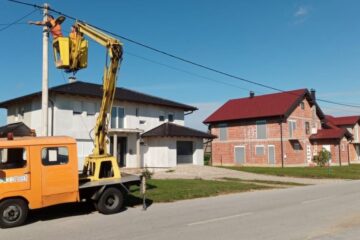
The fifth generation of mobile connectivity is expected to revolutionize device communication. In this area, Asian countries and the USA are usually ahead of all other countries. But this kind of technology is coming along in all regions. After 2G, 3G and 4G mobile internet generations, the world is now turning into 5G network architecture.
Currently, the 4G network is present in several locations around the globe and is still dominant. In some countries, the 6G network is already being talked about and treated as an important issue but, for now, let us focus on 5G and some best practices that will help you get great projects and grow your telecom business. It’s time to take full advantage of the opportunities 5G brings!
The last few years have witnessed an explosion of the traffic demand and a paradigm shift in terms of service usage. The next years will also witness a further, more dramatic increase of machine-to-machine connections, mostly because of the availability of Internet of Things traffic and services. Moreover, many delay-critical services will need to be supported by 5G networks.
Such services will be of critical importance in areas like automotive and mobility, factories of the future, healthcare, media and entertainment. By being available, they will create new revenue streams for many stakeholders.
1. Planning a 5G network architecture
Before start working on the deployment of a 5G network, it is important to discuss planning and design; this is a prerequisite not only on 5G but for any project. Transition to 5G requires an extremely well-planned and focused approach for operators to execute their technical strategy and meet business goals. Things like high capacity, faster data rates, ultra-low latency, densification and reliability are crucial questions to considerer on this plan.
2. More than the cloud
Multi-Access Edge Computing (MEC) is an important element of a 5G network architecture and network. An evolution in terms of cloud computing: putting applications on the network edge and assuring they will be closer to the end-users and their devices. This is a crucial thing in order to assure better and faster content delivery between the user and the host. Even though this is not an exclusive on 5G technology, fact is that it is key to its efficiency. MEC brings low latency, high bandwidth and real time access to RAN information that distinguish a 5G architecture from its predecessors.
3. Never ending capacity…
5G itself as a service and 5G network architecture have a massive capacity to address market demands. This capacity must be based on things like use case requirements, implementation timelines, and forecasted user growth. Specialist are talking about two deployment models related to capacity management that will impact network design:
Centralized – Requires the bulk of the traffic routed through central data centers, and massive backhaul and data center interconnect capacity.
Distributed – Future model to guarantee massive capacity and low latency requirements of 5G while potentially increasing complexity.
By now, the need for additional capacity is delivered by implementing traditional solutions like carrier aggregation, additional fiber / bandwidth in transport, and deploying incremental nodes in the packet core. But this will soon be different.
4. Resiliency
This is no more than the ability to handle and recover from network and network function failures. This is one of the first, more important requirements for a 5G architecture network. The network design must be resilient and provide real-time KPI monitoring, self-healing functions, and other advanced capabilities in such different areas as advanced traffic engineering or closed-loop service assurance.
5. Access-agnosticism
When reducing dependency between the core network and the access networks, each one can evolve in a different way, and convergence among 3GPP, non-3GPP, and fixed access networks. For this, we have two main approaches to provide agnosticism in the access: the use of a convergence layer between the two networks or the use of standard interfaces across technologies.
It is a wrap! Time to rapidly find competitive suitable products for your new projects
We have highlighted above five best practices to build a 5G network architecture but there are many more. It depends on the needs of your clients as well as the backbone infrastructure you are dealing with. Now, let’s go to action!
The most successful projects involve the best possible products, right? If you need to rapidly find the most suitable ones with competitive price and access catalogues with all the technical specifications, Twoosk is the right place. It’s a specialised telco marketplace with a team always ready to help you.
Within the marketplace, you can find a wide range of equipment for a 5G network architecture, compare products/prices and easily request quotations. You’ll also benefit from immediate deliveries and a simplified purchase process, in a portal opened 365 days/year. All the products available are already produced, which makes possible to send as soon as you request for them. Everything happens in one single place, saving time, money and ensuring a safe experience. Discover here all the reasons why Twoosk is the best place to buy telecom products.
Related articles: How quickly will 5G be rolled out? Faster than other technologies!










Very interesting, we need article like this, very useful, thank you
Thank you for your feedback!
Well,5G requires an extremely well-planned and focused approach for operators to execute their technology strategy and meet business goals.